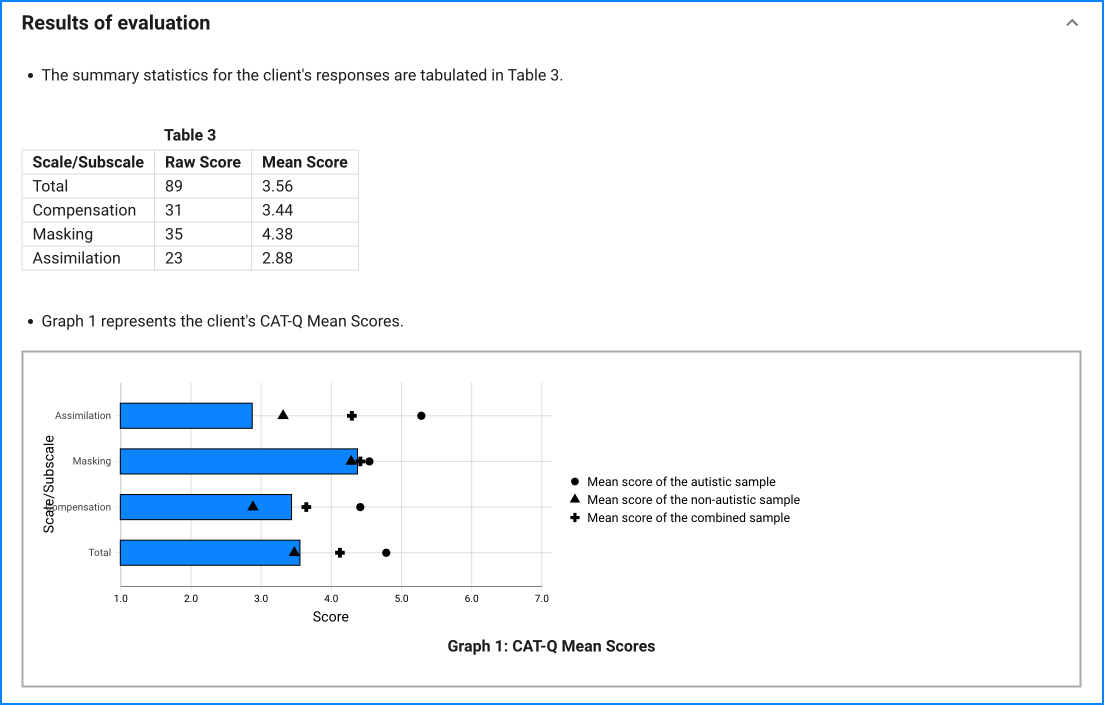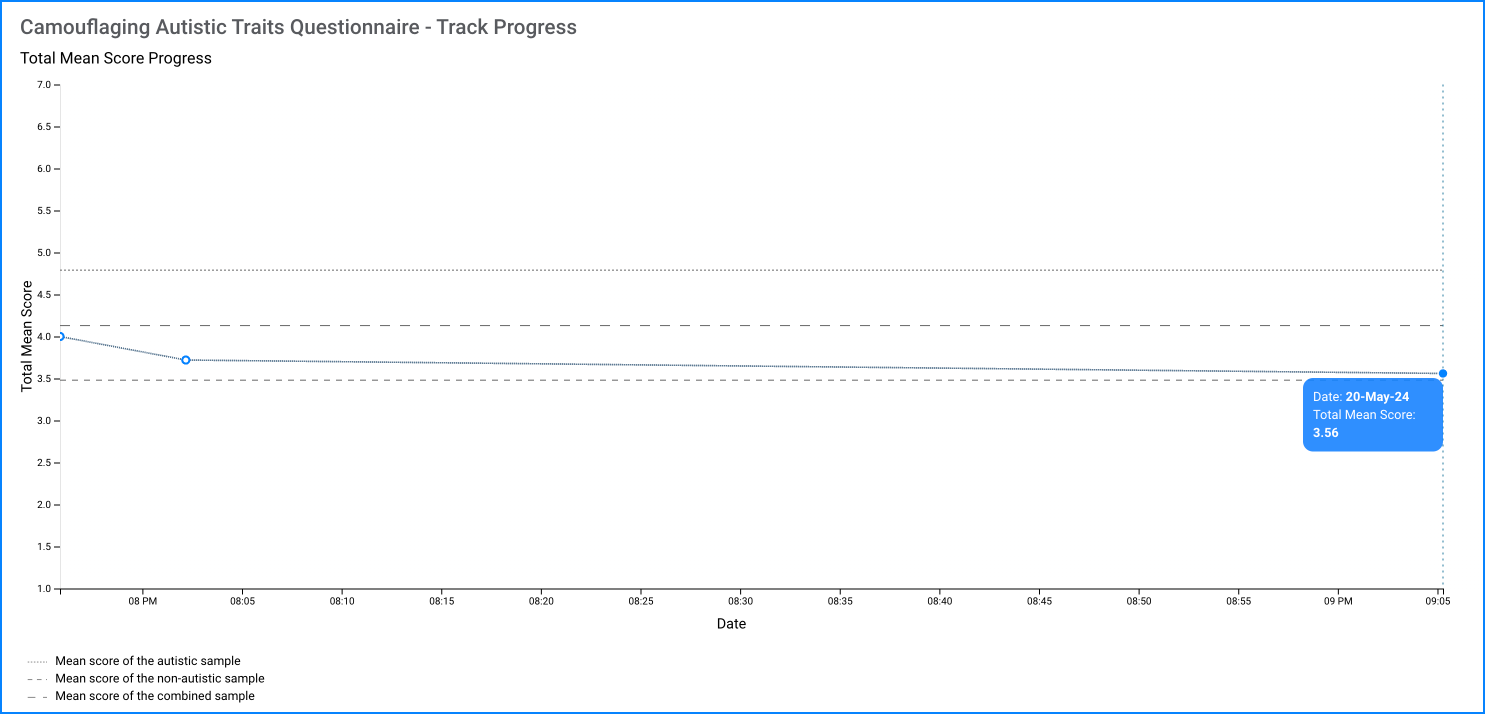Participants responded using a seven-point Likert scale, from ‘Strongly Disagree’ to ‘Strongly Agree’ with each statement.
CAT-Q total score
Start delivering measurement based mental health care
Conduct psychological assessments remotely, get scores automatically, and maintain clinical records securely
Create account

The Camouflaging of Autistic Traits Questionnaire (CAT-Q) is a 25-item self-report questionnaire measuring strategies used to camouflage autistic traits and comprising three factors (Compensation, Masking and Assimilation) which are summed up to produce a total score from 25 to 175, with higher scores representing greater levels of camouflaging.
You can create a free account on PsyPack to access fillable PDFs, manuals and educational resources for the CAT-Q
Participants responded using a seven-point Likert scale, from ‘Strongly Disagree’ to ‘Strongly Agree’ with each statement.
CAT-Q total score
Then, add up all answers for statements 1–25.
Compensation score
Masking score
Assimilation score
CAT-Q total and factor scores in the autistic (N = 200) and non-autistic (N = 202) subsamples and the combined exploratory sample (Com; N = 402)
| Scale | No. of items | Autistic Mean (SD) | Non-autistic Mean (SD) | Com Mean (SD) |
|---|---|---|---|---|
Total | 25 | 4.79 (0.99) | 3.48 (1.04) | 4.13 (1.21) |
Compensation | 9 | 4.42 (1.31) | 2.89 (1.27) | 3.65 (1.50) |
Masking | 8 | 4.55 (1.35) | 4.29 (1.10) | 4.42 (1.24) |
Assimilation | 8 | 5.29 (1.15) | 3.32 (1.27) | 4.30 (1.56) |
Raw Scores have been rescaled to reflect the 7-Point Likert Scale
PsyPack can automatically score the CAT-Q assessment and prepare corresponding tables and graphs.

Further, PsyPack automatically plots a graph to help you easily track progress over time.

Social Camouflaging Behaviours, Autism Spectrum Disorders
The purpose of the evaluation is to:
Self-administered
Clinical
Questionnaire
16 years and above
5 to 10 minutes
Since the questionnaire relies on client self-report, all responses should be verified by the clinician, and a definitive diagnosis is made on clinical grounds taking into account how well the client understood the questionnaire, as well as other relevant information from the client.
The CAT-Q is a valid and reliable self-report measure of adults’ social camouflaging behaviours, suitable for use in autistic and non-autistic male and female populations. It can be used in research settings to quantify camouflaging behaviours and compare between groups; in clinical settings as a potential screening tool for individuals who may be missed under current autism diagnostic criteria because they camouflage; and by autistic and non-autistic people to aid identification of beneficial or harmful behaviours they use in social situations.
The self-report CAT-Q only measures individuals’ own reflections/perceptions of their camouflaging behaviours, and is thus limited in its use to those who are able to reflect on their own behaviours and provide insight to their motivations. The CAT-Q may therefore not be useful for autistic individuals with language difficulties or intellectual disability. By combining this measure with behavioural or informant-report measures of camouflaging, estimates of camouflaging behaviours in those who have less insight or ability to communicate it can also be obtained.
Hull, L., Mandy, W., Lai, MC. et al. Development and Validation of the Camouflaging Autistic Traits Questionnaire (CAT-Q). J Autism Dev Disord 49, 819–833 (2019). https://doi.org/10.1007/s10803-018-3792-6